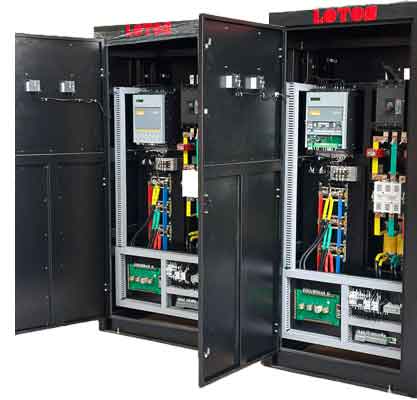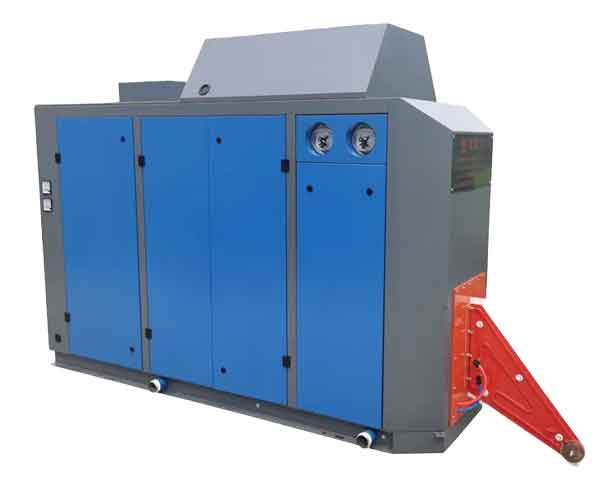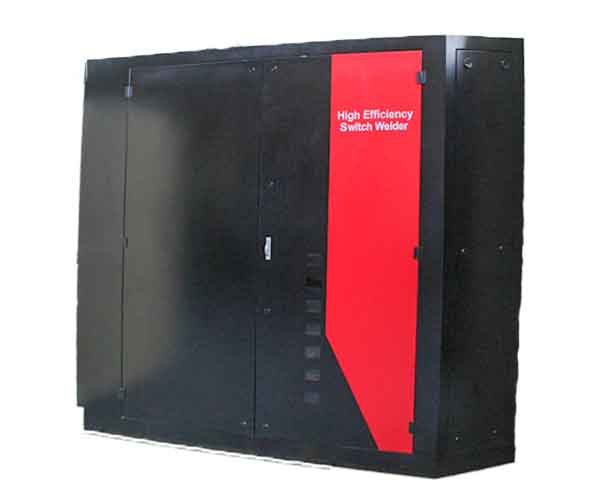MOSFET & IGBT Integrated HF welder
- Home
- MOSFET & IGBT Integrated HF welder
What is the difference between an IGBT and a MOSFET?
In today’s advanced world, welding is no longer limited to traditional processes like electric arc welding. Technology has significantly evolved, and solid-state welding has become one of the most important methods in modern industries. Among them, two critical components in the performance of welding machines namely, MOSFET and IGBT play key roles. But what is the difference between these two technologies? Which one is better for which project? And how can the best choice be made for higher efficiency and durability? This article provides precise, step-by-step answers to these questions so you can confidently step into the world of Solid-State Welding with complete knowledge.
Solid-State Welding is one of the most advanced methods of joining metals, and unlike traditional welding, it does not require complete melting of the parts. In this method, two metal parts are joined together under pressure, and in some cases with controlled heating, without melting. This process allows the crystalline structure of the metals to be preserved as much as possible, resulting in a very strong final bond.
One of the main advantages of Solid-State Welding is the reduction of metallurgical changes in the parts. In traditional welding, due to the high heat, the Heat Affected Zone (HAZ) becomes extensive and may weaken sensitive areas. However, in Solid-State Welding, this zone is minimized.
What is MOSFET?
A MOSFET (Metal Oxide Semiconductor Field Effect Transistor) is a type of field-effect transistor that is widely used in power and electronic circuits because of its high switching speed and simple current control. Simply put, a MOSFET functions like an electronic switch that can open or close the current path between the source and the drain with a gate voltage. This feature makes it suitable for use in Solid-State welding machines that require fast switching.
In welding, MOSFETs are a popular choice due to their ability to operate at high frequencies and respond quickly. Their key features include:
- High switching speed
- Low drain-source resistance (RDS(on))
- Low-voltage control
- Stable operation under light to medium loads
In inverter-based devices, such as lightweight TIG and MIG welders, MOSFETs are the best choice due to their fast response and precise current control.

Advantages and Disadvantages of Using MOSFETs in Welding
- Suitable for low-voltage and high frequency applications
- High efficiency in light duty applications
- Simplicity in circuit and driver design
Disadvantages:
- Limitation at high voltages
- Sensitivity to high temperatures
- Quickly heats up under heavy loads, leading to reduced performance
Therefore, if your welding machine is designed for light duty and high precision projects, MOSFET will be a suitable choice.
What is IGBT?
An IGBT (Insulated Gate Bipolar Transistor) is an electronic component that combines the features of both MOSFET and BJT technologies: simple gate control like a MOSFET and high current carrying capacity like a BJT. IGBTs are widely used in industrial and heavy duty welding systems due to their ability to handle high voltage and current.
Comparison of the Structure and Performance of MOSFETs and IGBTs
MOSFETs use a simpler structure with a metal oxide layer, while IGBTs have a more complex, hybrid structure. IGBTs are physically more robust and perform better in harsher industrial conditions. On the other hand, because of their simpler structure, MOSFETs are preferred for lightweight and compact circuit designs.
At high frequencies, MOSFETs have a clear advantage. Due to their lower gate capacitance and faster switching times, they are the top choice for devices requiring rapid current changes. However, IGBTs are slower in this area and perform better at low to medium frequencies.MOSFETs operate with higher efficiency under light loads, but at high currents, they heat up quickly, leading to reduced efficiency. In contrast, IGBTs provide stable performance and lower losses at high currents. Therefore, the choice between the two should be based on the type of project and whether it requires high frequency or high current.
Is the IGBT and MOS tube the same in the welding machine?
MOSFETs are used in portable welding machines and light-duty inverters, whereas IGBTs are used in industrial welding machines, submerged arc welding, and large and heavy equipment.
In industrial environments, heat, load fluctuations, and high voltage are challenges that MOSFETs can hardly handle. However, IGBTs, with their robust design, are more stable against these factors. For this reason, in welding production lines of factories, IGBTs are a better option.
If your project involves sensitive parts requiring precise control, MOSFETs are more suitable. But if you are dealing with large equipment and thick materials, choose IGBTs. In other words, MOSFETs are designed for precision, while IGBTs are designed for power.
Energy Efficiency in IGBT and MOSFET Solid State Welding
MOSFETs have very high energy efficiency at low to medium currents due to their low RDS(on) (the resistance between drain and source when turned on). This low resistance results in less heat loss when current flows. Also, because of their high switching speed, less energy is wasted during the on/off switching process. Therefore, in devices with high frequency and medium power, MOSFETs can achieve efficiencies of 95% or even higher.
In inverter welding machines designed for precision, this high efficiency means reduced energy consumption, increased device lifespan, and less need for cooling systems. However, as current increases, the energy efficiency advantages of MOSFETs diminish.
Energy Efficiency Overview of IGBTs:
IGBTs perform much more efficiently than MOSFETs in high-voltage applications. Although their switching speed is lower, their voltage drop when turned on (Vce(on)) is very low and stable. This means that in heavy-load projects, energy losses are reduced and overall system efficiency is higher.
With the ability to handle very high currents, IGBTs are used in industrial welding such as butt welding, industrial doors and windows, and heavy production lines. In these cases, high efficiency translates to reduced energy costs and increased output.


Durability and Lifespan of MOSFETs and IGBTs in Welding
MOSFET:
MOSFETs generally have a long lifespan, especially when operated within their recommended voltage and current ranges. However, high temperatures and sudden loads (such as short circuits or sudden voltage drops) can increase their vulnerability.
For this reason, proper cooling, protective filters, and precise driver circuit design are essential when designing circuits that use MOSFETs.
In light-duty applications, the useful life of a MOSFET can exceed 10 years, but improper use may cause them to fail within a short time.
IGBT :
Due to their hybrid structure and high current tolerance, IGBTs generally have greater durability in industrial environments. Unlike MOSFETs, which are more sensitive to thermal conditions, IGBTs can maintain stable performance at higher temperatures and heavy voltages. However, their slower switching speed may lead to increased heat loss, requiring effective cooling systems.
IGBTs are typically used in machines that require 24/7 operation on production lines. In such cases, their lifespan can reach up to 15 years by utilizing thermal protection and safeguarding technologies.
Factors Affecting Service Life:
Cooling: The use of heatsinks, fans, or liquid cooling greatly impacts the durability of both types.
Build Quality: MOSFETs and IGBTs made by reputable brands have significantly longer lifespans.
Proper Usage: Matching the component choice to the type of load and environmental conditions increases service life.
FAQ :
1-How does an integrated HF welder improve pipe and tube quality?
By providing stable and precise welding current, the MOSFET & IGBT HF welder ensures consistent weld seams, smooth surface finishes, and reduced defects in pipe and tube production.
2-What is the difference between traditional HF welders and MOSFET & IGBT integrated welders?
Traditional HF welders often rely on vacuum tube technology, which consumes more energy and requires frequent maintenance. In contrast, MOSFET & IGBT integrated welders are more compact, efficient, and reliable, making them the preferred choice for modern tube mills.
3-Can a MOSFET & IGBT Integrated HF Welder reduce production costs?
Yes. With higher energy efficiency, lower maintenance requirements, and consistent performance, these welders significantly reduce production costs while increasing output quality.
4-Why choose LOTOSFORMING for MOSFET & IGBT Integrated HF Welders?
LOTOSFORMING is a leading manufacturer of roll forming and tube mill equipment in China. We provide advanced MOSFET & IGBT integrated HF welders designed for high performance, long service life, and customized solutions to meet your production needs.

